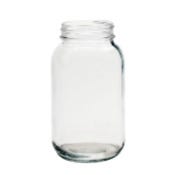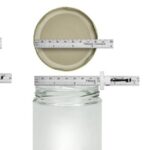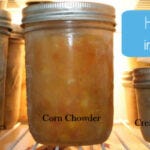
Are Canning Jars Tempered? Get the facts here.
Are canning jars tempered? No, canning jars are not tempered. There are many conflicting claims, and articles posting misinformation which has resulted in significant confusion regarding this topic. We looked at the science and wanted to shed some truth on the matter. The fact is canning jars are not tempered, not even Ball canning jars. Although most canning jars go through an annealing process; this is not the same as tempering and does not produce the same result as tempering.
Facts on Tempering vs. Annealing
Annealed Glass: In this process, glass is thermally treated and then cooled to relieve internal stresses introduced during the manufacturing process. For most glass products, the annealing temperature falls between 850 °F and 900 °F, which is the stress-relief point of the glass. Then, the pieces heat-soak until the temperature is consistent throughout and the stress reduction is adequate. Canning jars do go through an annealing process. Annealed glassware will still shatter into sharp pieces when broken.
Tempered Glass: In this process, glass goes through a tempering oven heated to over 1,100 °F. After heating, the material undergoes a few seconds of a high-pressure cooling procedure called quenching, in which air hits the surface of the glass from multiple nozzles in multiple positions. Tempered glass can also be created through the exchange of ions by various chemicals on the glass surface, causing compression. One practical example of tempered glass use is in the side and rear windows of modern vehicles. The tempering process results in dull pieces of glass instead of sharp shards. Tempering is not the same as annealing. Canning Jars are not tempered, but they do go through an annealing process.
Why does it matter?
All packaging components have physical limits and glass is not an exception. All glassware is subject to the reality of thermal shock. Thermal shock, by definition, is a mechanical load caused by a rapid change of temperature of a certain point. Thermal shock is the name given to the cracking of glass resulting from rapid temperature change.
Most Canning 101 instructions include several measures to deal with thermal shock, but do not often explain why. Here are examples:
- Warm your jars before filling them with a hot product.
-
When removing hot jars from the canner, place them on a cloth-covered surface so that the heat isn’t transferred out of the jars too quickly.
-
Do not attempt to do canning or pressure canning outside during cold weather, or in a space that is very cool.
-
Do not try to rush the cooling process by moving jars into a cooler too quickly.
The thermal shock differential is the range of change that glass can generally withstand before experiencing shock and damage. For canning jars, this range is generally 90 degrees Fahrenheit. This means that you aim to manage your process and post-processing environment temperatures so that all changes are within that range.







Thanks so much for this information!! I knew we were to warm jars before filling but didn’t know WHY we were to place hot jars on a towel after canning. Thanks for everything you put out here for us!! I enjoy learning even when I thought I knew a lot already!!!
So. If I was to reuse a jar which was shop bought with say peas or peppers in it, that would be fine as it’s no different than a specific canning jar.
We can’t confirm that, since we don’t know the source or quality of the particular jar. It will definitely matter if you are planning to to pressure canning. The stresses that are in play during that process are greater than water bath, canning. It is important that you are only using jars that are designed with those stresses in mind.
Great Info!